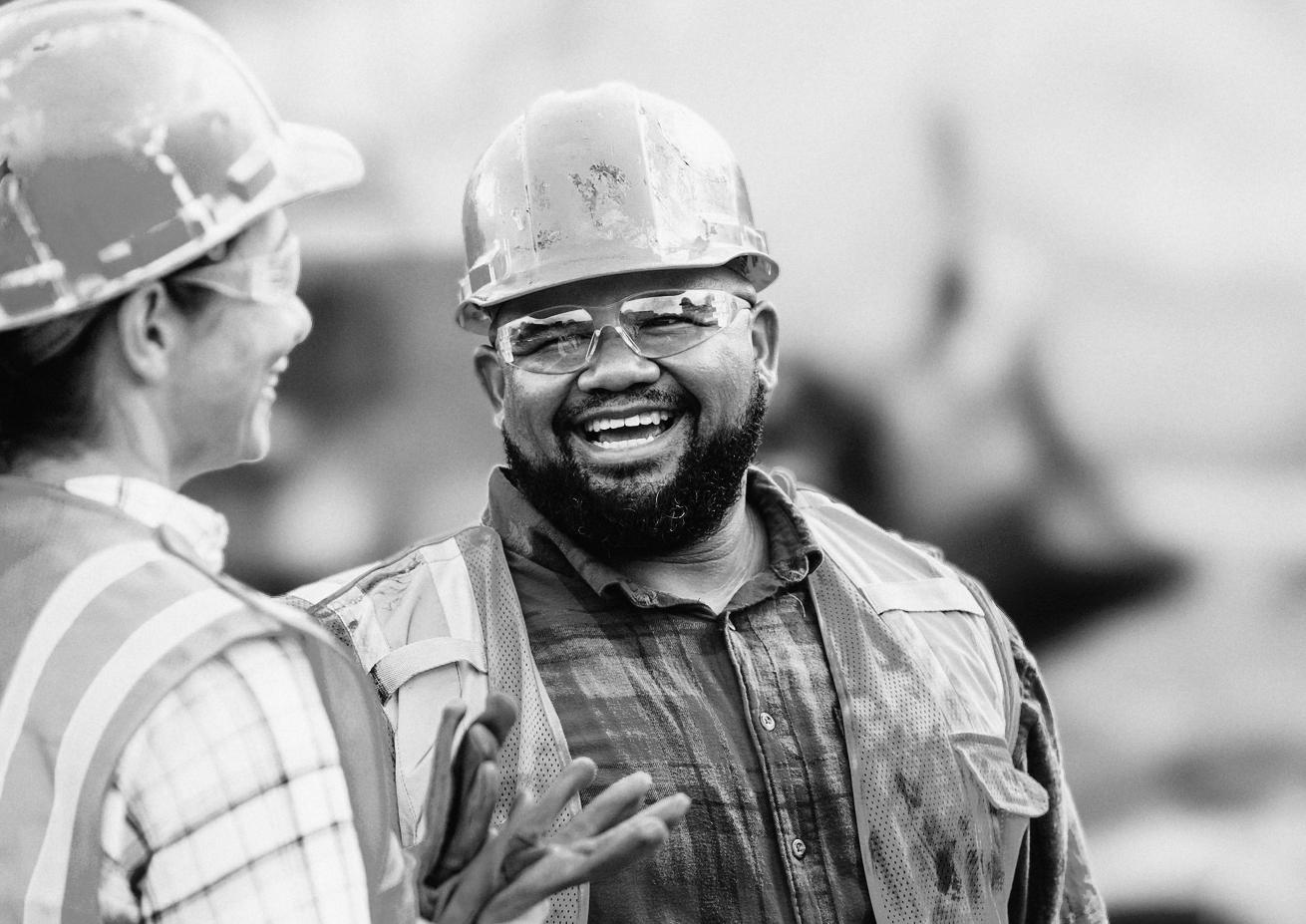

Capability Development A platform for
From Decarbonisation to Digital Twin;
and Mental
Wellbeing to Misunderstanding the Reliability Engineer –MAINSTREAM is not your average conference.
Join the MAINSTREAM community in Fremantle for an amazing day of content, networking, knowledge-sharing and fun as we celebrate the people, technology and ideas transforming asset management.
MAINSTREAM acknowledges the Whadjuk people as the traditional owners of the greater Fremantle/Walyalup area. The land around Fremantle (Walyalup) has always been a significant place for the Whadjuk. We pay our respect to the ancient and continuing cultures and connections to land and to Elders past, present, and emerging.
Decarbonisation, Energy Transition, and the Impact on the Asset Manager
Using AI, Automation, Robotics, and Machine Learning
Barriers to Executing Work Management Fundamentals
Progressing from Data Overload to Leveraging Data for Decision-Making
Developing the Maintenance Workforce of the Future
Implementing Strategies for Maintenance Workforce Health and Well-Being
Overlooking and Underappreciating the Reliability Engineer
Securing Support and Budget for Asset Management Initiatives
Aligning Your Asset Strategy with Your Company Strategy
Delivering Value through Predictive Analytics Tools
EDI and the Promotion of Diversity and Inclusion in Engineering
Current Workforce Skills Gap and Technical Training
Capturing, Governing and Visualising Data
Operational Readiness
Supply Chain Disruptions and the Impact on Maintenance Solutions
Implementing End-to-End Asset Management Digitization

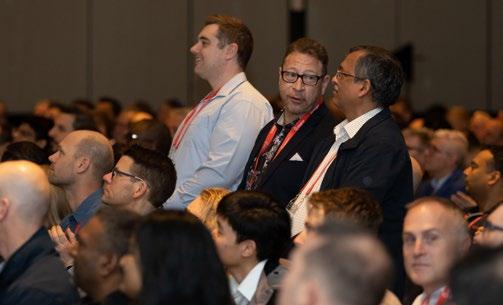

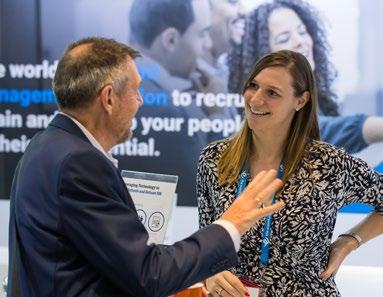
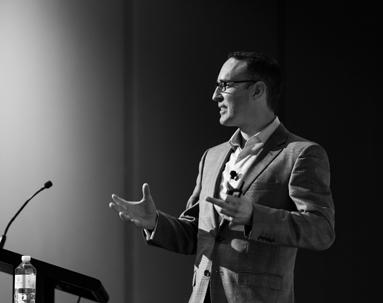
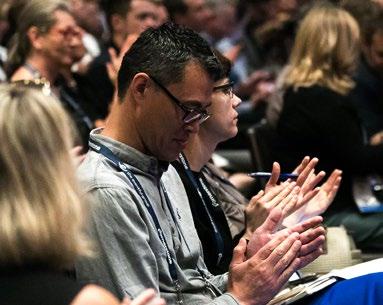


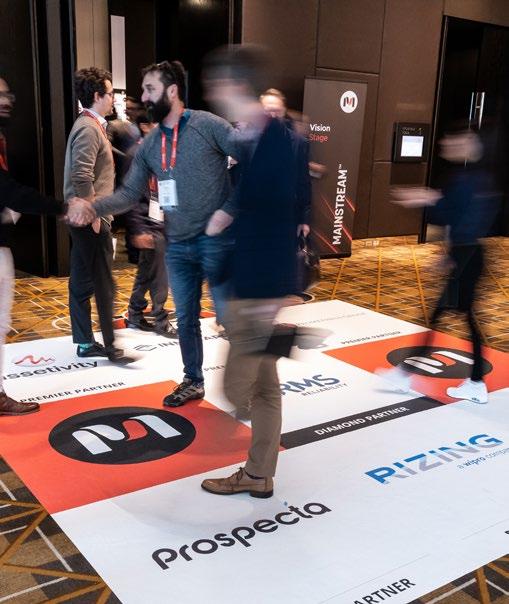
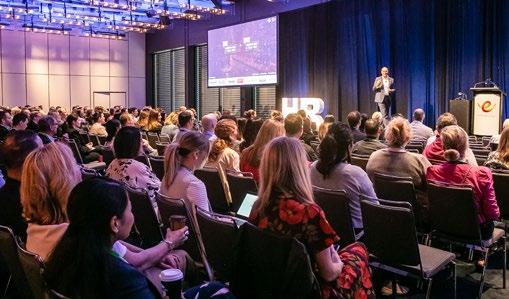
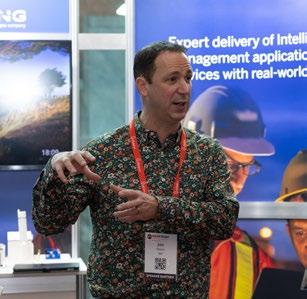
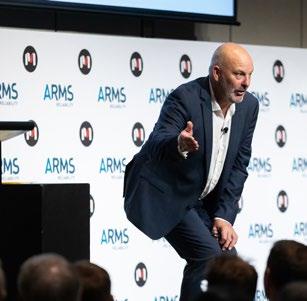
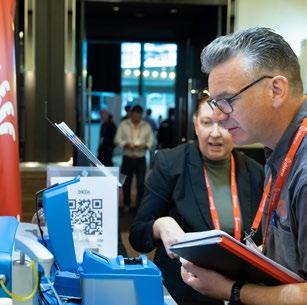





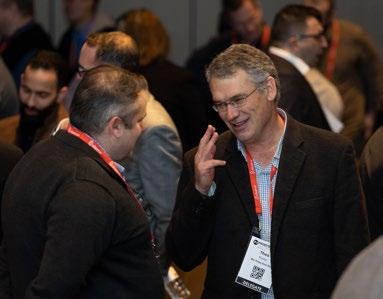

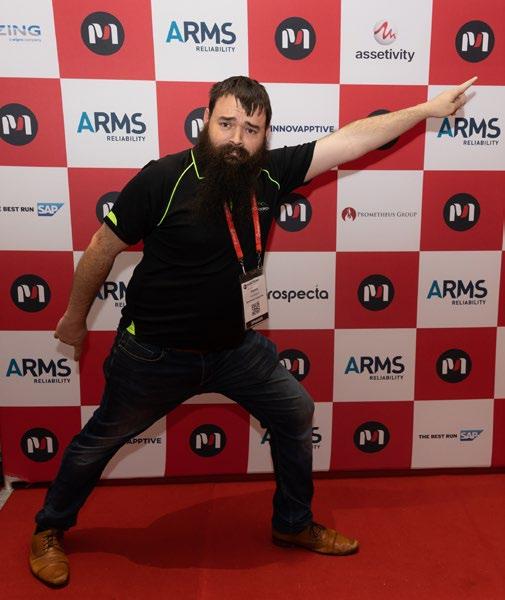
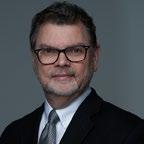
“ MAINSTREAM is the best Asset Management and Reliability Conference in the world.”
Drew Troyer CRE, MBA, CMRP and Renowned Reliability Thought Leader

“Just when I think it can’t be better… MAINSTREAM goes to the next level ”
David Kramer Head of Asset Management and Reliability Engineering, Downer
Who attends MAINSTREAM?
Adelaide Brighton
AGL Energy
AGL Loy Yang
Amazon
ANSTO
APA Group
Aquip Systems
Archer Group Consulting
Arrow Energy
Asset Maintenance Group
Asset Performance Solutions (APS)
Asset Schools
Assetivity
Aurecon Australia
Aurizon Holdings
Aurora Offshore Engineering
Australia Post
Australian Gas Infrastructure Group
Babcock Australasia
BAE Systems Australia
Baker Hughes
Barwon Water
BE Campbell
Beach Energy
Bega Cheese
Bendelta
BetterAIM
BHP Iron Ore
BlastOne International
BlueScope Building Components
BlueScope Steel
BPD Zenith (AUST)
Brightly Software Australia
Bureau Veritas Australia
Capgemini Australia
CBH Group
Citic Pacific Mining Management
Clarita Solutions
Cloonmore
Coates Hire Operations
Complete Asset Management Solutions
Contact Energy
Continuum AI
Converge International
CopperLeaf Technologies
COSOL
Covalent Lithium
Covaris
CS Energy
CSBP
Curtin University
Cyient
Dalrymple Bay Coal Terminal
Darwin Port Corporation
Dassault Systemes
Datch Systems
Decoda
Defence – CASG
Deloitte Australia
Department of Defence Australia
Domaine Chandon
Duratec Australia
Eaglevale Engineering and Management
Solutions
Ego Pharmaceuticals
Endeavour Energy (NSW)
Energy Queensland
EnergyAustralia
Enerven Energy Infrastructure
Enterprise Improvement Solutions
Fisher & Paykel Healthcare
Fluent Commerce
Fluke Corporation
Fortescue Metals Group
Foundation Civil & Mining
Fremantle Ports
Genesis Energy
GHD Advisory
Gibbs & Cox Australia
Gladstone Area Water Board
Gladstone Ports Corporation
Gladstone Regional Council
Glencore
Gold Fields Australia
Goldfields Equipment
GrainCorp
GreaseBoss
GVS Reliability Products
GWMWater
Hexagon Metrology
Hexagon PPM
Hunter Water Corporation
I&E Systems
IBM Aust/NZ
Icon Water
IFS Australia
Information Quality
Innovapptive
INPEX Operations Australia
K1 Save Energy
KPMG Australia
La Trobe University
Laminex Australia
LYB Operations & Maintenance
Lyttelton Port Company
Macedon Ranges Shire Council
Machinemonitor
MacMahon Holdings
Maincomz
Mana Consulting New Zealand
MaxGrip
Melbourne Airport
Melbourne Water Corporation
Meshed IoT
Metro North Hospital and Health Service
Metro Trains Melbourne
Mid West Ports Authority
Minset
Missing Link Supply Solutions
Monash University
MyPass Global Australia
New Zealand Steel
Newmont Goldcorp Australia
Newmont Mining Corporation
Nova Energy Consulting
Obzervr
Oji Fibre Solutions (Aust)
OnPlan Technologies
Opal Australian Paper
Orica Australia
OZ Minerals
Patrick Terminals
Pilbara Ports Authority
PM Eleven
Power and Water Corporation
Powerlink Queensland
Predge AB
Prometheus Group
Prospecta Software Australia
Public Transport Authority of WA
Qantas Airways
Queensland Alumina
Queensland Nitrates
Queensland Sugar
Razor Labs
RedEye Apps
Reduxo
Rio Tinto Iron Ore
Rizing – a Wipro Company
RMIT University
Rockfield Technologies Australia
Roy Hill
Royal Australian Navy
Royal Botanic Gardens and Domain Trust
RPMGlobal Holdings
Santos
SAP Australia
Saputo Dairy Australia
Scope Systems
SECORA Consulting Australasia
Shivaan Asset Management
Signavio
SNC – Lavalin Australia
Snowy Hydro
South32
Southern Ports
Spotless Group (A Downer Company)
SunWater Limited
Swinburne University of Technology
Sydney Water Corporation
Synergy Group Australia
Talison Lithium
TasNetworks
TasWater
Telstra Corporation
Territory Generation
The Aladon Network
The Perth Mint
The University of Melbourne
The University of Newcastle
The University of Queensland
Thermalign
Tianqi Lithium Energy Australia
Tomago Aluminium Company
Transdev Australasia
TransGrid
UGL Pty
Unitywater
V/Line Corporation
V/Line Passenger
Valmet
Verbrec
Virgin Australia Regional Airlines
Viva Energy Australia
VROC Artificial Intelligence
Water Corporation of WA
WEL Networks
Wesfarmers Chemicals, Energy & Fertilisers
Wesfarmers Kleenheat Gas
West Coast Eagles
Western Power
WesTrac
Windlab
Wipro Technologies Australia
Wood Australia
Work Management Solutions
Z Energy NZ
Zinfra Group
19/03
Tuesday
18:00 – 20:00
• Speaker Briefing
• Partner Briefing
Agenda Overview
20/03
Wednesday
07:15 - 08:00
• Registration, Networking & Expo
08.00 –18:00
• Keynotes on Main Stage
• Asset Stage
• Reliability Stage
• Maintenance Stage
• Masterclasses
• Innovation Theatre
18:00– 19:30
• Net working Drinks, Canapes & Expo
Brilliant Content. Capability Development. Incredible Networking.
Curated Content Across Four Tracks
Access to all Keynotes, Tracks and Demos
Choice of four 90-minute Masterclasses
Lunch, Morning & Afternoon Teas
MAINSTREAM Networking Function
Mobile App & Meeting Planner
Searchable Attendee List
Access to all Content After the Event
Year-Long Membership to the MAINSTREAM Online Community Platform
One Hundred Million Machines –Decarbonisation Demystified
With wildfires, torrential floods, parched reservoirs, and other dramatic signs that the climate crisis is upon us, we would all like to flip a switch and stop our carbon emissions so that we can save the planet for our children. But in a world full of fossil-fuelled machines (and regulations that support them), it’s hard for many people to imagine the pathway to achieving net-zero emissions in time to keep global heating under 1.5–2.0degrees C above pre-industrial levels. But that pathway can be simply stated: electrify (almost) everything.
It’s time to demystify decarbonisation so that we understand what we need to do to switch our economy from one that relies on fossil fuels to one powered by clean electricity. This requires understanding the machines we use, their energy needs, and how, and how quickly, we can transition those machines to ones that are fuelled by renewable energy (predominantly wind and solar).
Australia can be the world’s foundry, we can make the world’s ammonia and hydrogen, and we could even store the world’s carbon in rebuilding our soils through agricultural sequestration.
We will create savings in our suburbs, and jobs in our regions and show the world the pathway to whole-economy success. The time has come for action; the time has come to lead. As a small nation of hard-working, quiet achievers with everything to win, and everything to lose, we should go first, and we should go fastest. Let’s do this, for our children and for ours.

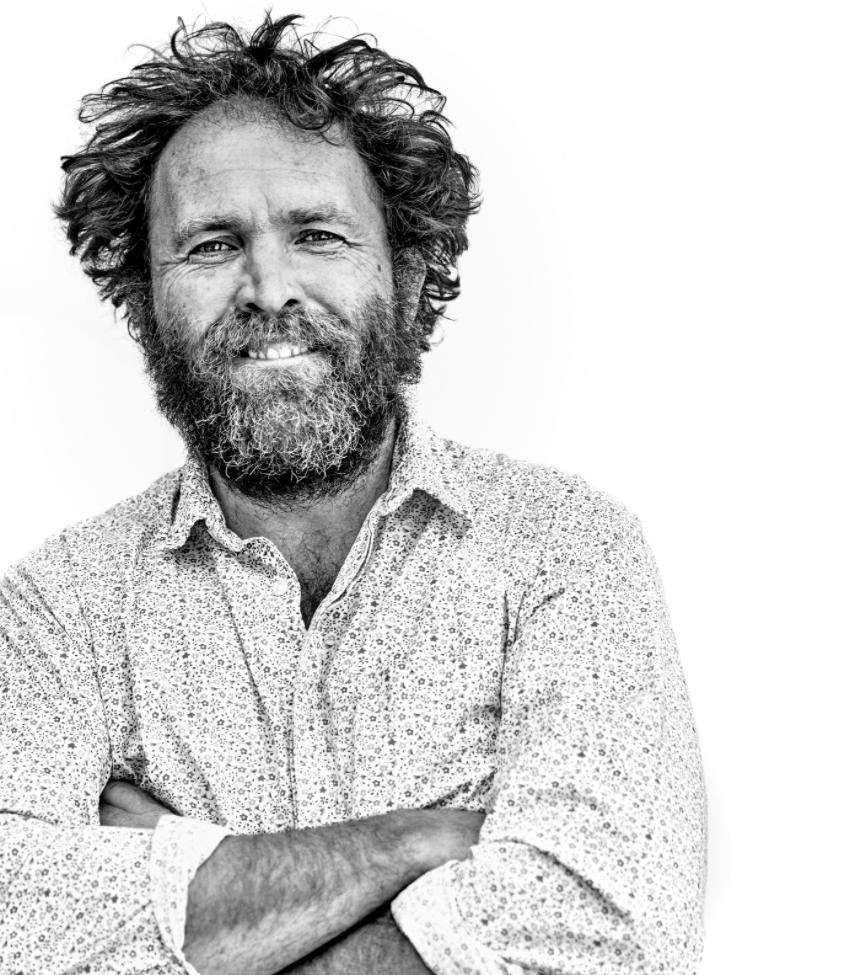
Dr Saul Griffith
Engineer, Inventor, Author, and Scientist – Rewiring Australia
Saul is the co-founder of Rewiring Australia and has a gift for turning large reams of complex data into simple, actionable plans. Under his leadership, Rewiring America helped shape the US Inflation Reduction Act – the largest ever investment in energy transition and electrification.
He has led projects for agencies including NASA, DARPA, National Science Foundation and more. He has founded and co-founded multiple successful companies, including one acquired by Google, another by Autodesk, and another by a consortium of vehicle manufacturers including Toyota. In 2007 he was awarded a Macarthur Fellowship, the so-called ‘Genius Grant’, for inventions in the service of humanity.
Saul is a nominee for the 2024 Australian of the Year Award.
What Decarbonisation Means for Asset and Maintenance Managers
Maintenance and reliability leaders are essential in helping organisations navigate the transition to a more sustainable and climate-resilient future. How do we adapt to these new technologies, optimise energy use, and comply with a changing regulatory landscape in the context of decarbonisation and climate change targets? All disrupting previous lifecycle plans, investment, and reinvestment decisions, asset management strategies and tactics, and the physical asset manager’s role.
• What is the impact on jobs and skills?
• How do we work with regulators and the requirements and environmental standards?
• What measures should asset managers take to account for the risks associated with stranded assets in the context of decarbonisation efforts?
• What about the capacity and resource challenges coming our way with all companies relying on the same suppliers and resources to decarb at the same time?
• What opportunities and challenges will asset managers face in integrating renewable energy sources and clean technologies into their asset management strategies?
• How will the role of the reliability engineers change?

Michelle Keegan Manager, Electric Mine Consortium

Drew D. Troyer
Principal Advisor, Bootleg Advisors (USA)

Tim Aujard
Head of Asset Performance, Australian Gas Infrastructure Group (AGIG)
Scratching Below the Surface
Health and Wellbeing is very much front and centre for maintenance and reliability leaders. Creating mentally healthy workplaces is a necessity for employee productivity, satisfaction, and organisational success.
FIFO teams are a huge part of the regions workforce and bring very specific and difficult challenges. This engaging conversation will explore the strategies and practices that leaders are using to build workplaces that support and empower employee well-being, engagement, and productivity. How do we manage the growing concerns regarding the mental health and well-being of our workforce and the FIFO team. During this session we will focus on the projects bringing results.
In this session we will:
• Learn how organisations can use technology effectively
• Hear about the key tactics we can employ to communicate with traditionally hard to engage workers
• Examine the key support services in a hybrid/online environment to bring about benefits
• Look at the changing psychosocial risk landscape – regulation and compliance “ fit for purpose solutions”
• Focus on the key risks to the MHW of remote and FIFO workers eg. shift impacts, fatigue, isolation
• Examine why we include contemporary job design principles into the FIFO context

Lachie Samuel
The FIFO Mental Health Guy, FIFO Mental Health Group

Sandra Lam
Managing Director and Organisational Psychologist, FIFO Focus
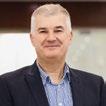
Simon Brown-Greaves
Chief Mental Health Officer, Australia Post
Meaningful Diversity, Equity, and Inclusion (DEI)
In today’s globalised world, workplace diversity is essential for organisations to remain competitive and thrive. A diverse workforce can bring fresh perspectives, innovative ideas, and a range of skills and experiences that can help organisations stay agile and adaptable in the face of change. However, simply having a diverse workforce is not enough. To fully leverage the benefits of diversity, organisations must also foster a culture of inclusion, where every employee feels valued, respected, and supported. In this panel, we will explore the challenges and opportunities people leaders are facing when building a culture of belonging in the workplace, with a focus on diversity, equity, and inclusion.
Our panellists will share their experiences and insights on:
• Best practices for creating an inclusive workplace
• Strategies for recruiting, hiring, and retaining a diverse workforce
• Promoting equity and fairness in the workplace
• Creating an inclusive culture where everyone feels empowered to contribute their best
Our panellists will also discuss how organisations must can DEI initiatives, and the importance of engaging employees at all levels in creating a more inclusive workplace. We will explore how organisations can measure the impact of their DEI efforts, and the benefits of creating a more diverse, equitable, and inclusive workplace for employees, customers, and the broader community.



Eight Steps to Successful Organisational Change
The merger between Woodside and BHP petroleum in 2022 triggered a need for an organisational change within the operations division. Due to the sudden increase in assets held in Australia and Globally, it was no longer appropriate to have centralised teams supporting the entire operations division. The organisational change came with a lot of new role titles and role changes, and impacted everyone in operations, maintenance, and engineering.
I lead the change for one of Woodside’s key Australian assets – the Karratha Gas Plant. There was a lot of pushbacks against the new organisation, which was challenging to navigate. I had just completed my MBA so put what I had learnt into practice including the 8 steps to a successful change, and the emotional reaction to change model. During the transition, it was important to track key asset metrics to ensure integrity, safety and efficiency continued at a high standard, without anything falling through the cracks.
We’ll walk through the following 8 steps we employed:
• Establishing sense of urgency
• Creating guiding coalition
• Developing vision and strategy
• Communicating change vision
• Empowering broad-based action
• Generating short-term wins
• Consolidating gains and produce more change
• Anchoring this new approach in culture

How to Build Maintenance & Reliability Capability from Within!
Building internal pipeline of talent is hugely important for the future of maintenance. With the aging maintenance workforce population in Australia, and slimming talent pool to recruit from, building the capability of maintenance professionals requires development within the organisation. Traditionally, Reliability and continuous improvement positions are leveraged via entrance into the maintenance world within mining, attracting diverse pool of applicants. With most of the learning and development left solely to the time spent in the role, and new employees finding their own way to develop core skills needed to be successful in maintenance roles. Over time, these reliability positions saw a huge churn, varying from 6 months to 18 months. Job dissatisfaction and role clarity were the key drivers behind this turnover.
We’ll explore the 6 months Reliability Capability program we developed to provide role clarity and deepen understanding of technical, professional &leadership skills. The program incorporated education, exposure, and experiential learning elements to elevate capability of 200 plus reliability engineers and specialists across organisation.
• Engagement and support from maintenance managers was paramount to program’s success
• Showcasing real life case studies of work that was being executed within the business, set a tone for enthusiasm and motivation to learn and grow as an organisation
• Majority of the learning happens outside the class. It’s important to build an ‘experience’ piece within the program
Key take-aways and learning will include:
• Examining the Reliability Capability program we produced to enhance role clarity and deepen technical, leadership and professional skills of reliability professionals who were from diverse backgrounds
• Why and how we developed internal and external contributors, presenters, facilitators, content developers, and engaged with key internal stakeholders to ensure buy-in from leadership, and reward for participants
• The importance of delivering virtual programs through support of external vendors, internal support teams

Maintenance Strategy Optimisation: Uniting Reliability Principles and Data Science for Significant Savings
Energy and resource companies manage extensive asset portfolios with thousands to hundreds of thousands of critical equipment. Amidst COVID-19, many businesses were forced to find innovate ways to cut costs while ensuring safe & reliable production was still met.
In this session, we will explore how Woodside, Australia’s leading oil and gas operator successfully reduced thousands of maintenance hours and banked savings by optimising maintenance strategies.
We will dive into the innovative maintenance strategy review tool that was developed in-house, utilising diverse data sources and applying fundamental reliability technique. This approach quickly pinpointed over, under and incorrectly maintained equipment, facilitating targeted reviews for data-driven decision making.
In this session we will explore:
• How reliability fundamentals and data science can be united to realise significant saving
• The effectiveness of a minimum viable product (MVP) for quick wins
• Deep dive into the strategy review tool & how we achieved rapid business integration and sustained value delivery
• Future plans and application advancements

Creating the Future of Workforce Health and Well Being Strategies for the MAINSTREAM Community
In this thought-provoking session you’ll hear key learnings and experiences from Simon BrownGreaves. We’ll draw on his 20 years career as a workplace psychologist and his more recent experience as Chief Mental Health Officer at Australia Post.
Workplace mental health – rarely has one topic received so much attention. The topic was clearly the no 1 issue impacting the Mainstream community. Yet despite so much time, energy and resources being thrown at the issue are we seeing any real evidence of impact and improvement and are we really managing employees’ expectations and demands when it comes to wellness?
This session will concentrate on how to develop a positive mindset and a positive outlook. We’ll hear what companies can do to ensure they manage workforce stress effectively. We’ll examine programs which have created a culture of belonging while forging psychological safety at work and demonstrate how we can measure success.

Attracting and Retaining Diverse Talent
Diversity within the workforce is important for several reasons but ultimately it drives higher performing teams. In this session we will examine how I recently led a major program within a major mining organisation.
We’ll look at how you can attract and retain a diverse workforce in a sustainable way. Focusing on how we designed and setup a program to train and embed these individuals within the workforce, rotate through different teams and ultimately find the right place to land in the organisation.
Learn how having a person-centred approach was important to match the talent within the right teams and ensure they felt supported and empowered while coaching and mentoring them on their journey. This ultimately saw diversity within the workforce increase, across gender, LGBTQ+ and First Nations employees with low attrition and higher employee satisfaction within this group.
• People focused diversity hiring is important but ensuring the right supports and mechanisms are in place is key to success
• Don’t forget about the rest of your workforce, bring them on the journey. Promote internally to create space for the new talent]Dedicated support and funding are key to success
• Dedicated support and funding are key to success

Defeating Imposter Syndrome –Breaking into the Boys Club
In my first month on the job – I was asked to step up as the Reliability Manager. The first thing that was said from another male manager was ‘She is not good enough, she cannot do that job’. After the longest minute of silence my manager said ‘She is good enough and she will prove you all wrong’. I am a very confident young women who always stands up for herself – but in that moment I chose not too. For many reasons, one of them being maybe he was right? Maybe someone with more experience should be allowed the opportunity – not the new kid on the block. It had me questioning all my skills and experience to the point I thought I had made a mistake in taking this job.
I changed my mindset and decided to look at this as a learning opportunity, a challenge. The next month flew by and I held my own in being able to manage both the maintenance planners and engineers on site. If I didn’t have the answer I could find someone who did. We saw productivity increase and the engineers felt motivated in the work they do. I encouraged them and supported them as human beings not just as engineers – prioritising mental health and creating a safe work place culture.
Those first few months were the hardest, but I earned the respect of the other managers and in turn, acceptance into the boys club.
• You don’t have to be the smartest person in the room – its about communication. Successful leaders don’t believe they have all the answers, they surround themselves with smart people and seek their input.
• You are never to young to be a leader. Are you as a business developing global leaders? This next level leadership includes global strategic thinking, intellectual curiosity and strong self-awareness. Cultural intelligence is also critical to a global leader’s success.
• The generational gap – the great resignation. Baby boomers have to accept that the younger workforce do things differently to how it would have been done back in the day. For the first time we see multiple generations working in the same workforce. A young generation who prioritise mental health and well being before work and strive for a better work life balance.

Procurement Operations Manager, Oji Fibre Solutions
Maintenance Budgeting for the Enterprise
Maintenance budgeting systems and processes in asset-intensive organisations lack efficiency, are heavily driven by manual data collation and are inconsistent across the enterprise. This limits the organisation’s ability to provide visibility into expenditure, adequate cost variance reporting and ultimately, its compliance to strategic plans.
Delivering an enterprise-grade maintenance budgeting solution is the path to address these issues. Success of such solution can be measured through high levels of user adoption and executive support. Both of which can only achieved through a successful organisational change management program that supports people, standardises processes and simplifies the technology stack. Don’t underestimate the effort required to bring the business along for the journey. This includes senior leaders as well as finance, technology, and maintenance teams. Keep to the fundamentals when designing your initial program. The secondary benefits will come later, but they can only be realised after your core activity of building a budget has integrity.
• Executing an Organisational Change Management strategy
• Securing senior leadership support for an investment in a maintenance budgeting solution
• Aligning the global process and approach for maintenance budgeting
 Tom Gleeson
Tom Gleeson
Manager – Maintenance Budgeting Solution, BHP
Successfully Separating Our Engineering Function in Three –Reliability, Maintenance Engineering and Compliance!
Until recently, there was no clear strategy to undertake Reliability work within Alcoa. The Engineering structure did not support the delivery of reliability work and equipment performance was unpredictable. In this session we’ll explain how we have deliberately and purposefully segregated the Engineering function into three clear sub – functions – Reliability, Maintenance Engineering and Compliance – creating a major step change in predictability of equipment performance and compliance to Asset Activities will be sustained.
• Providing vision, context, and purpose for your Engineering Function
• Designing an Operating Model for Engineering
• Design of a structure that supports the Engineering Strategy
• Resistance to change can be overcome by including the Engineering team in the design of the RACI (Operating Model)
• Designing the Org Structure that will deliver the Strategy

Maintenance and Reliability Manager, Alcoa
Importance of Asset & Engineering Management in Metronet Projects
Alignment between asset and engineering management is crucial for successfully developing, operating, and maintaining infrastructure assets. These two area shave different but complementary roles in ensuring that assets are designed, constructed, and operated effectively and efficiently. We identify significant process gaps due to completing project priorities vs maintenance, which leads to a high level of network disruption and risk to asset operation.
Project delivery with asset management issues can lead to entry into service delays, operational challenges, increased costs, and potential risks. Common problems include incomplete asset information, poor integration between project and asset teams, inadequate documentation and handover, poor system assurance, budget constraints, insufficient training, project delays.
To protect the above challenges, a proactive, standardised, and integrated engineering management plan with clear safety critical milestones includes all deliverables of asset readiness as per the best practices of asset management and the obligation of Railway National Safety Law (RNSL 2015).
PTA has an engineering management strategy (EMS) defining the PTA asset life cycle model, including EM4P – Engineering Management for Projects and EM4M – Engineering Management for Maintenance as an engineering governance & assurance process for PTA for delivering safe, reliable, predicted assets life cycle. EM4Pis driving the Metronet project engineering assurance activities and provides authorities with enough confidence to make the right informed decisions for asset readiness and start revenue services.
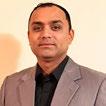
Work Management Flow and Plant Reliability
In this practical session we will look at how Wespine created its maintenance management program which has enabled them to the get the right people doing the right job. Hear how Daniel and his team joined forces with a specialist and training consultant to create work management workflows, a paperless workforce, as well as significantly improve the sitewide data input and history for asset management.
• Some tasks may seem impossible but with the right attitude things can be improved
• With passion you can achieve anything you set your mind to
• Creating a Maintenance Management program and getting the right people to do the job
• How we have created a paperless work force
• Study how we have improved the sitewide data input and history for asset management

Delivering Value - Strategy into Action
Faced with the challenges of climate change, an ageing asset base and shifting customer and stakeholder expectations, Water Corporation embarked on a journey to define their 20-year asset management strategy and actions to implement it.
It was recognised that achieving the corporate objectives in an everchanging operating environment would require an integrated and holistic approach that drew upon the knowledge and wisdom of its people, industry perspectives and data driven insights.
Water Corporation developed a strategy which articulates the future state ambition across four focus areas, a comprehensive delivery roadmap and alignment to customer and operations.

Unlock the Key Player Missing From Your Maintenance Transformation Project
In response to external challenges including extreme weather, population growth, aging assets, and a global pandemic, Unitywater initiated a maintenance transformation project in 2021.
Drawing on insights from previous projects, a team was assembled comprising a Sponsor, Project Manager, Business Analyst, and a Business Lead. The inclusion of a Business Lead marked a strategic shift, enabling Unitywater to manage succession planning, mitigate the impact of external factors, and facilitate process, people, and technology changes effectively. This approach ensured that Unitywater remained resilient in the face of significant external challenges while advancing towards a proactive maintenance environment.
- Background on Unitywater’s dimensions, operating environment, and key challenges which lead to the formation of the Works Management Uplift Project
- Differentiating the role of a Business Lead, from that of a Product Owner, Project Sponsor, Change Manager or Subject Matter Expert
- The rationale for allocating budget to a Business Lead project resource, and the expected advantages, supported by case studies of projects where a Business Lead was and wasn’t used
- Project benefits, including team culture, expertise enhancement strategic succession planning
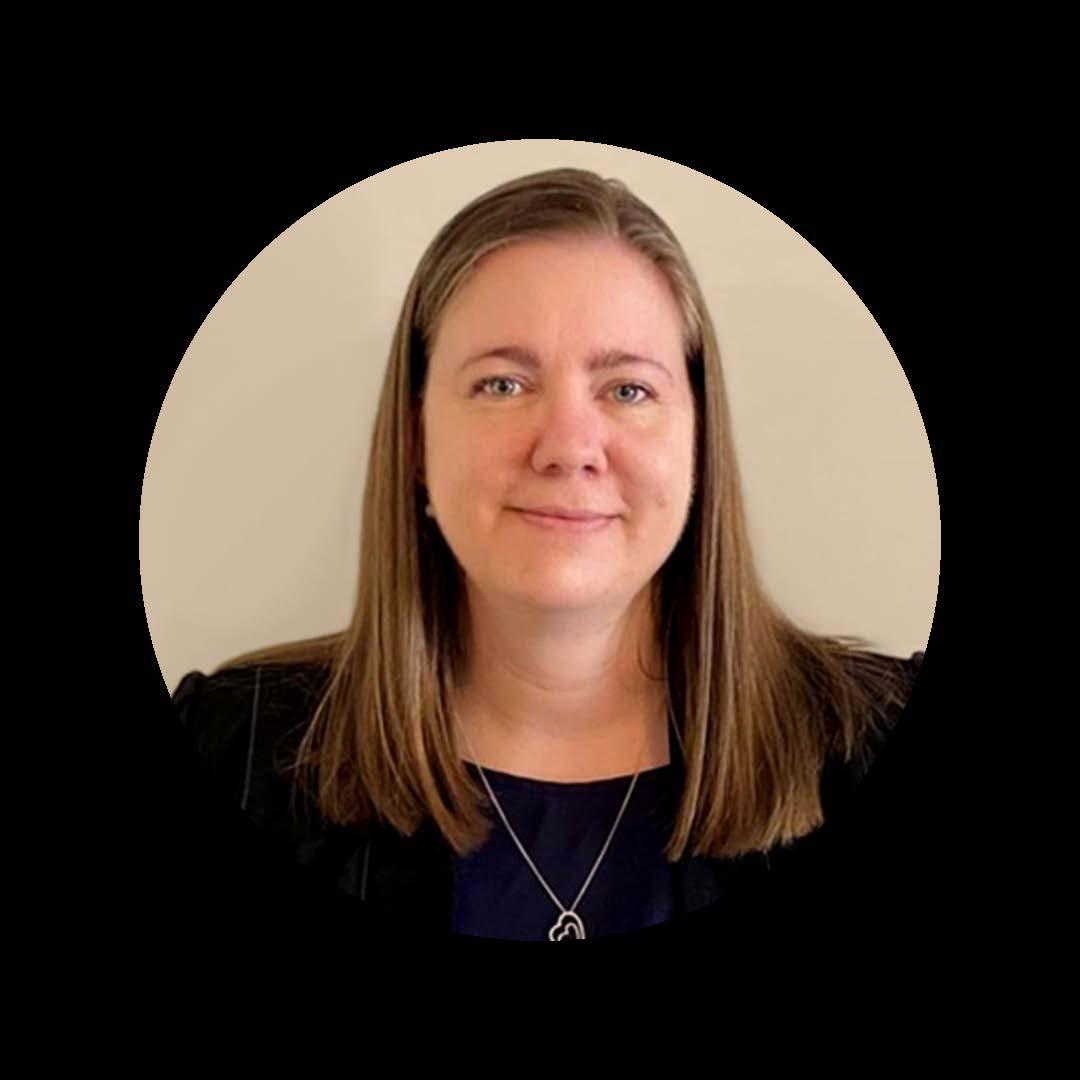
Haul Truck Availability Improvement
Reliability engineers have many tools and techniques available to perform their role. Individually, these tools can successfully contribute to solving issues. On some occasions the opportunity arises to combine many of these to support a single objective or task.
This case study will show how combining the following tools and techniques to improve the equipment availability of a haul truck fleet:
•Pareto Analysis (Downtime Analysis)
•Data Analytics (Weibull Analysis)
•T Test (Statistical Analysis)
•Maintenance optimisation
•Modelling and Simulation (RBD Analysis)
•Defect Elimination (Root Cause Analysis)
This project used a number of tools and techniques to systematically analyse the downtime and quantify five improvements that exceeded the truck availability target.
In this session, Mark will walk you through;
•The Identification of the problem (low availability) and the five main contributing factors
•Analysis of the causes of the low availability
•Development of proposed solutions
•Quantification of the solution to the equipment availability
And provide you with a structured approach to problem solving as well as practical example for common reliability tools.

Mark Mackenzie
Principal Asset Strategy,
Anglo American
SAP S/4HANA Greenfield Implementation for Asset Management
Woodside have been on a journey to implement SAP S/4HANA, the complexity of the project was increased by the merger of Woodside and BHP Petroleum in 2022 during the implementation. The project was also impacted by the requirement for Sarbanes Oxley reporting compliance prior to go live.
The project had clear and present executive commitment and closely adhered to the stated strategy of Vanilla, At Pace and Greenfields.
The Vanilla component was essential to bring together two organisations both working on highly customised ECC versions. All deviations from Vanilla required CEO approval with a supporting business case.
The journey went into Hypercare on 8th January after a successful go live. This journey started with a proof of concept, followed by product assessment and selection, and is now approaching the end of Hypercare. Organisations considering the move to SAP S/4HANA, unsure if a Greenfield implementation is achievable, this is an opportunity to hear about the approach and key milestones Woodside have taken to set up for a successful transformation and what it means for Woodside’s ambition to bring global operations together.
Learn how Vanilla, At Pace and Greenfields worked in a complex, asset-intensive industry with a global footprint and a merger during the project.
• Best practices for creating an inclusive workplace
• Strategies for recruiting, hiring, and retaining a diverse workforce
• Promoting equity and fairness in the workplace
• Creating an inclusive culture where everyone feels empowered to contribute their best

Ragan Stonier
VP of Operations Support, Woodside Energy

Bruce Raggatt
VP of Customer Transformation
Rizing - a Wipro Company
Maximising Product Throughput by Optimising Shutdown Calendar Alignment and Improving Future Maintenance Awareness
BHPs Iron Ore business identified a problem with the drivers for shutdown intervals, duration and scope. Many replacement requirements were being added to the shutdown scope at a late stage which impacted the planning and scheduling phase, particularly regarding labour, accommodation and supply chain.
This highlighted the need for good visibility of what critical path components need replacing in the future shutdown planning cycle. With the help of Verbrec Asset Management, BHP undertook an end-of-life analysis (EOL) for its Iron Ore Assets, to comprehensively define the equipment it has that are likely to be included in shutdown activities, and when they are next due to be replaced with an estimated cost. This is intended to serve as a key input to EOL Systemisation in order to create a long-term view of maintenance activities and provide build maturity.
The EOL information collated to date (with the help of Verbrec) is being used by Planners at Port to support decisions when developing the 2 year maintenance events calendar. Ultimately, the intent for this information is for it to be used as an input into a sophisticated digital tool, designed to mathematically and systematically identify an optimised maintenance plan which will ensure maximum throughput is achieved. The vision will be for maintenance across all sites of WAIO to be optimally aligned.
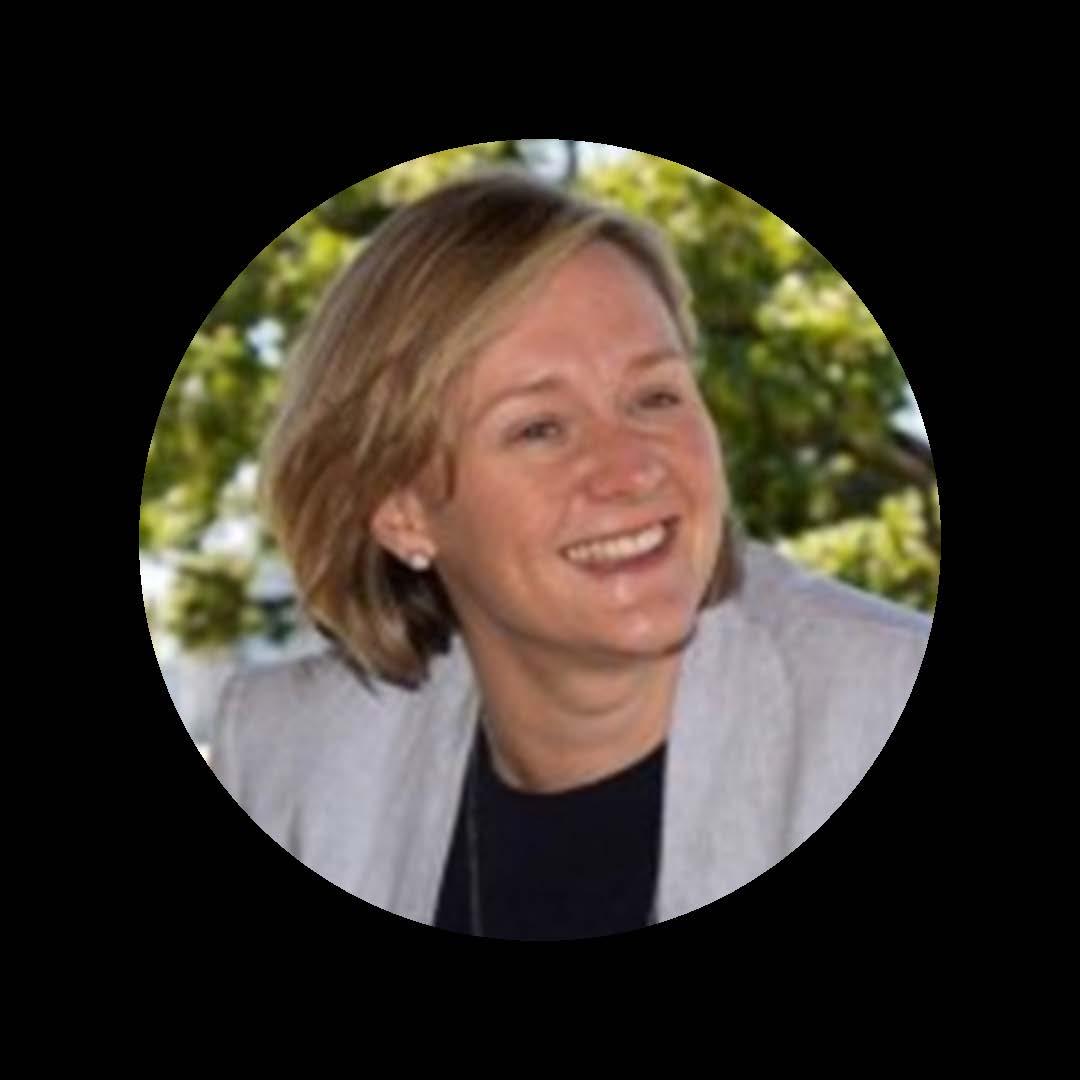
Vivian Blycha
Lead Asset Strategy and Reliability, WAIO Fixed Plant, BHP
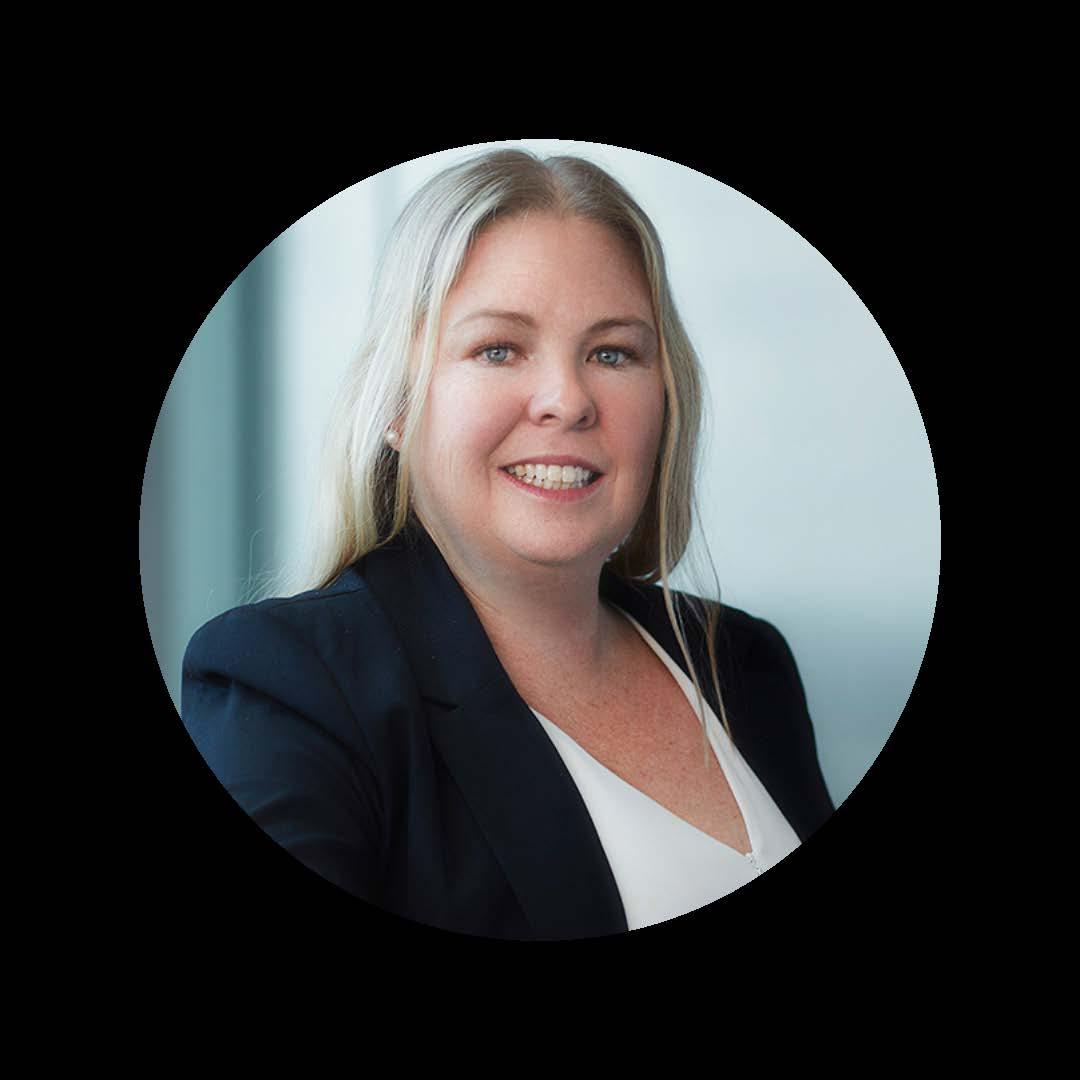
Leanne Corner Asset Strategy and Reliability Manager, WAIO Fixed Plant, BHP
A Practical Guide to Business Transformation and Innovation: Understanding the Steps to Success
Asset-intensive organisations understand the imperative of business transformation and innovation however it is easy to be overwhelmed by the plethora of approaches and technologies available. While the opportunities are significant, the ability to transform existing business processes and leverage new technologies is often constrained by historical decisions and subject to an IT-led agenda.
Taking ownership of your business transformation, including selecting the right partner to curate and tailor the capabilities needed, is essential to stay on top of your game and deliver on your business objectives.
When aligned with key steps to success - including future vision and value definition, clean core principles, persona-based journeys, and transition planning - organisations can not only successfully deliver much needed transformational outcomes but also pave the way for faster innovation in the future.
To help you on your business transformation and innovation journey, SAP and Rizing will share the steps to success, along with examples of how other organisations have applied these, and the benefits they are achieving.
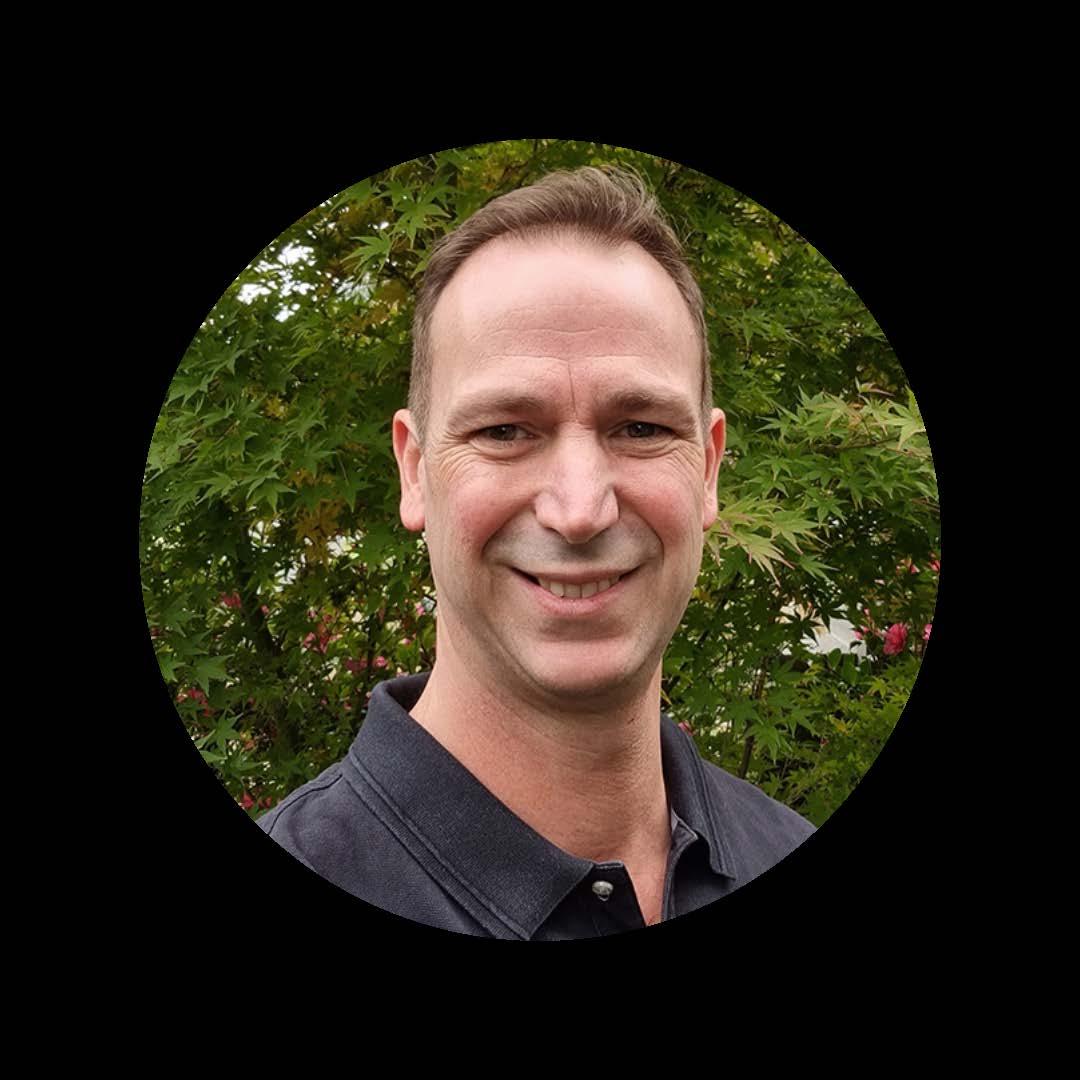
Jon Wilson
Centre of Excellence, SAP Digital Supply Chain, SAP
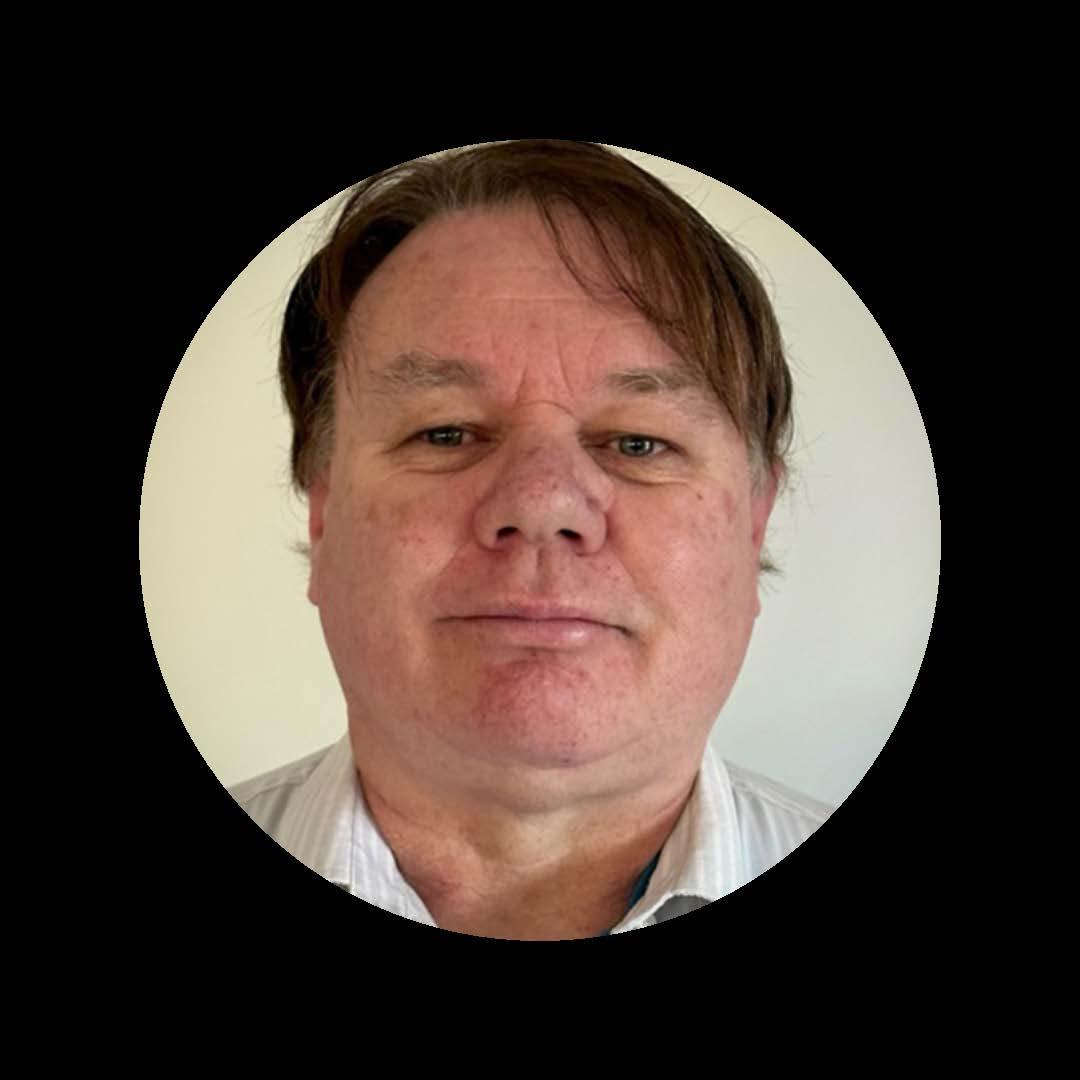
Darren Jose
Emerging Digital Solutions Architect, Rizing EAM
Masterclasses
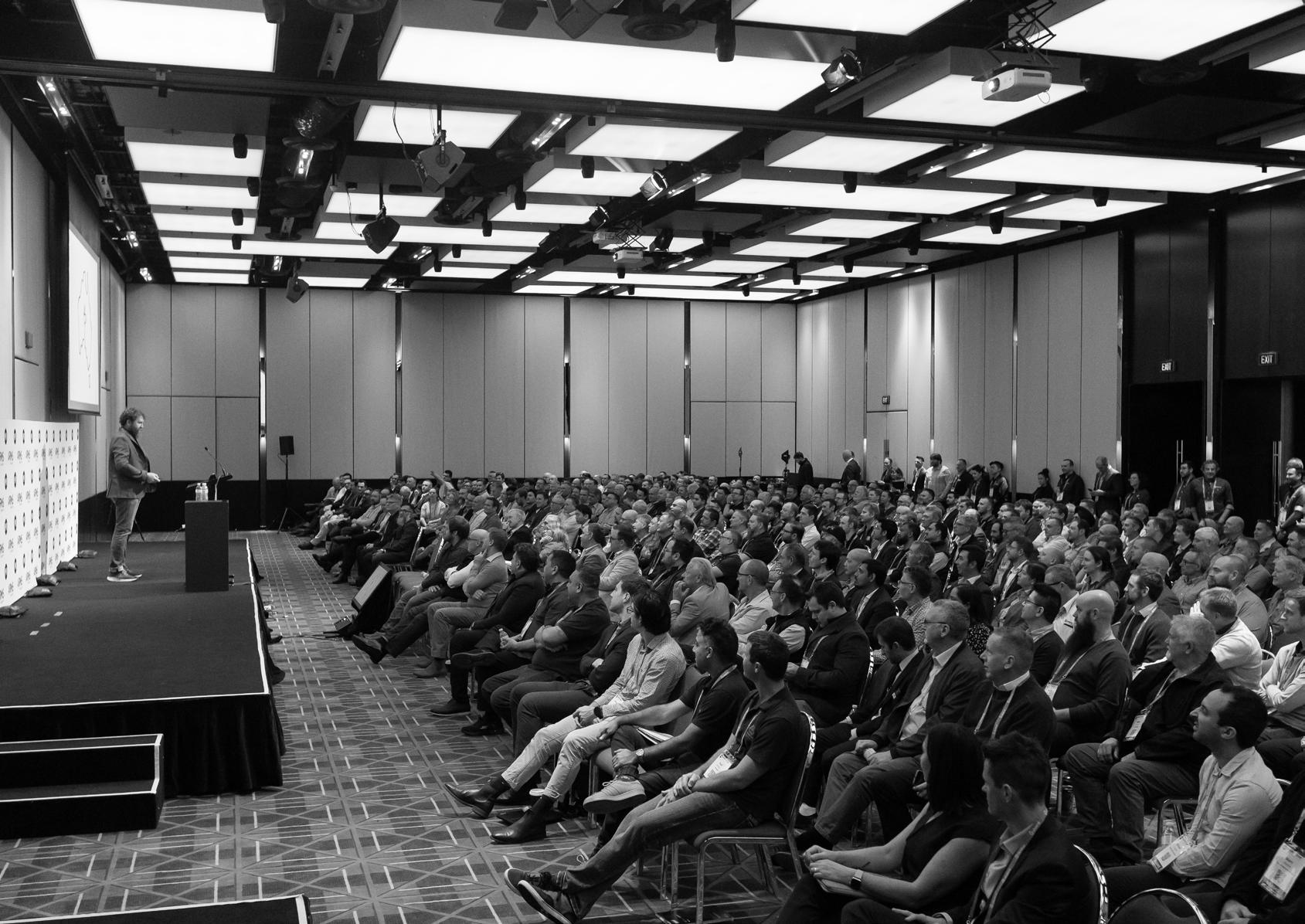
The four 90-minute Masterclasses are interactive, delivered by subject matter experts, and rooted in case history with real examples. They are limited in numbers to ensure maximum engagement, learning and capability development.
Why Your Asset Performance Is Still Not Where You Want It To Be
Still experiencing more unplanned failure than you would like, along with high maintenance costs and a short, busy, and reactive planning horizon?
Asset management has changed significantly with the advent of RCM, APM, Industry 4.0,IIoT, the acceleration of sensor capabilities and applications, ERP evolutions, mobility, and cloud deployments. However, it seems we have yet to make the transition from reactive to proactive, from disorder to order, and from uncertainty to predictability.
With all the technological advancements, the evolution of the asset management discipline, and the expanded focus on reliability, why have we not made the advancements we would expect?
This workshop will explore this question and present some surprisingly simple concepts that can unlock progression and support the success of the large programs and initiatives underway in your organisation.

Vice President, Solutions and Product Management, Baker Hughes
Asset Management Strategies to Reduce Your Energy Consumption by 20% or More
The United States Department of Energy (DOE) estimates that most industrial facilities in the manufacturing, mining, and process industries can reduce energy consumption by 20% by implementing existing best practices.
The savings can be doubled with investment in R&D and technology. Much of the savings is derived from better management, operation, and maintenance of production assets.
This workshop introduces the important role asset managers and maintenance & reliability engineers play in reducing energy consumption. In addition to saving energy-related costs, deploying the important practices described in this workshop reduces greenhouse gas (GHG) emissions and reduces wear and tear on the equipment assets.
• Minimising parasitic frictional losses
• Reducing the effects of electrical harmonics
• Achieving phase-to-phase electrical balance
• Finding and eliminating pressurised fluid leaks
• Maintaining combustion efficiency

Organisational Safety Leadership and Culture Starts With Leadership Behaviours – Not Their Words
Safety policies, rules, systems, procedures, training are all developed with the best intention – to improve overall safety performance and ensure people get to go homes safely every day.
As an executive leader of a multiple major hazard facilities both in New Zealand and Canada, I learned from personal experience how hard it can be to ensure that the culture you desire is the one that is the reality that the workers live in on a daily basis.
Over my career I learnt that people may comply but not engage fully and while we may have systems and processes for every event we could imagine, this alone does not drive a healthy culture beyond compliance.
High Trust in the workplace is mission critical to make genuine progress. Even the best intended leaders can find themselves behaving/communicating in a way that is misaligned with the culture they desire.
Leaders’ behaviours will determine the overall safety culture that will prevail and will in fact become the reality that people experience daily. This workshop is intended to help equip leaders in some simple Dos and “Don’ts” when it comes to creating a desirable safety culture for your workplace.
Participants will take away ideas and tools to:
• Build a “high trust” workplace which underpinsthe desired safety culture
• Develop behaviours that align with your desired safety culture
• Avoid demonstrating behaviours that derail the desired safety culture
• Tools to arm you when faced with behaviours that may derail the desired safety culture

Best Practice MRO for Maintenance and Reliability Teams
This session is designed for Maintenance and Reliability teams to learn best practices and strategies for effective MRO inventory management, and to understand the principles of spare parts optimisation in a maintenance repair and operating (MRO) environment. This includes how to optimise inventory levels, demand for the spare (preventive and corrective maintenance), reduce waste and obsolescence, alternative solutions to holding spares, improve supplier relationships and leverage technology. By the end of this session, you will be able to apply these concepts and tools to your own MRO inventory management challenges and improve your company’s performance and profitability.
Key challenges that will be addressed include:
• MRO is to reduce RISK at the lowest possible COST –this is an important fact that needs to be understood
• Cataloguing materials – this is a poorly developed process in most companies; everyone is looking for the silver bullet
• Finding and removing Duplicates (hard cash savings) – pure waste and frustrating for the Maintenance Teams
• Reduction of Free-Text spend – FT spend is almost never negotiated; by passes inventory and purchasing
• Criticality Calculation – usually very emotional causing high stock levels
• Stocking requirements – everyone wants everything stocked, just not possible, so what gets stocked
• Reorder Point (ROP or MIN) Calculation – rarely do companies apply logic when setting and reviewing ROP’s and this is an EXPENSIVE mistake
• Reorder Q uantities (ROQ) application –purchasing is an expensive exercise when not done well; ROQ’s help to reduce cost
• Stock Accuracy and Cycle Counting – for the maintenance teams to trust inventory management, stocks MUST be accurate
• Impact of Squirrel Stores – everyone has them and they are like a cancer!
• KPI’s& Metrics – what gets measured get improved!
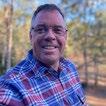
Tim McLain
Chief Strategy Officer - MRO Materials Management
Lexin Solutions
Attendees will leave this session with:
• Sample Calculators
• Material Review Template
• Cycle Counting Calculator
• Sample Cataloguing Template (Taxonomy)
Who sponsors Mainstream?
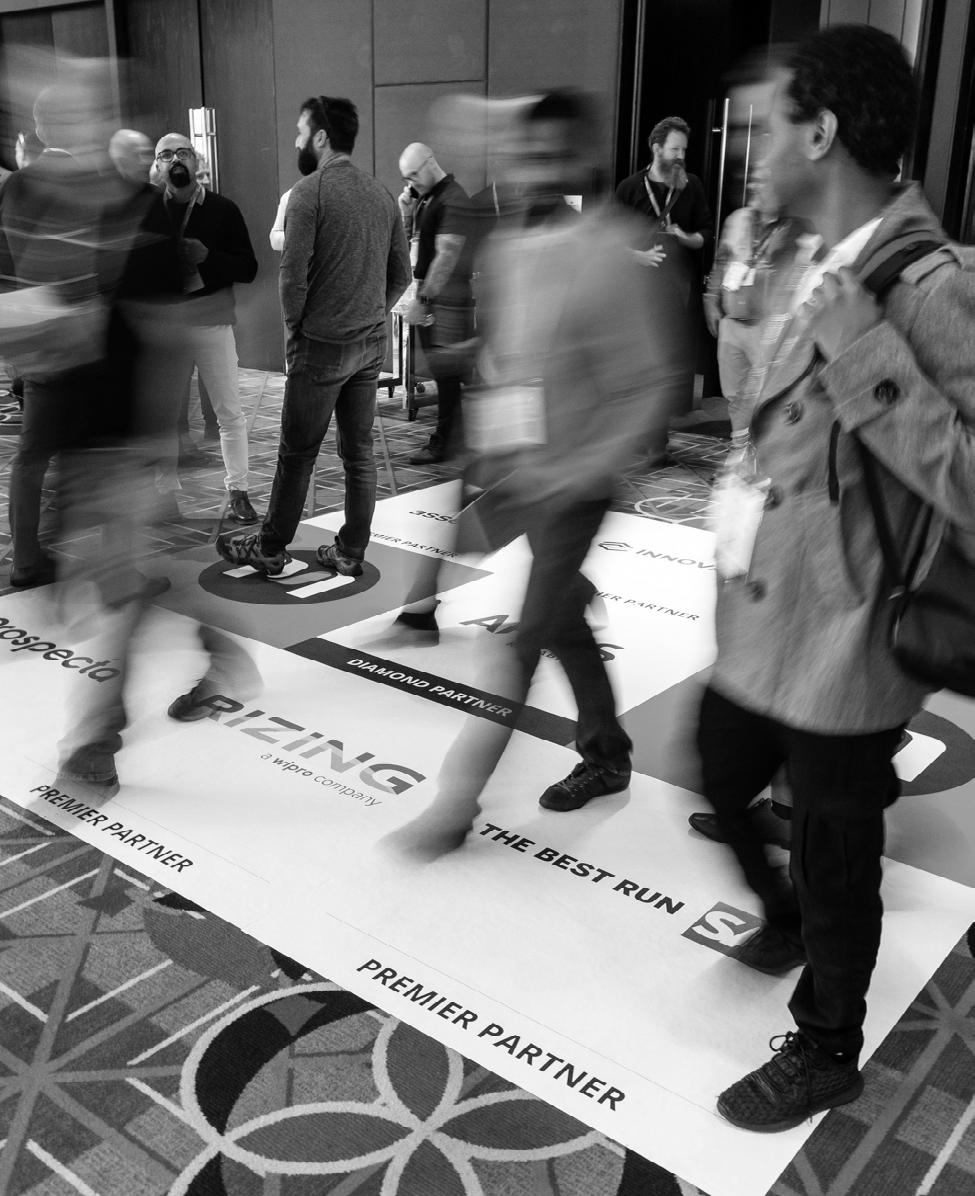














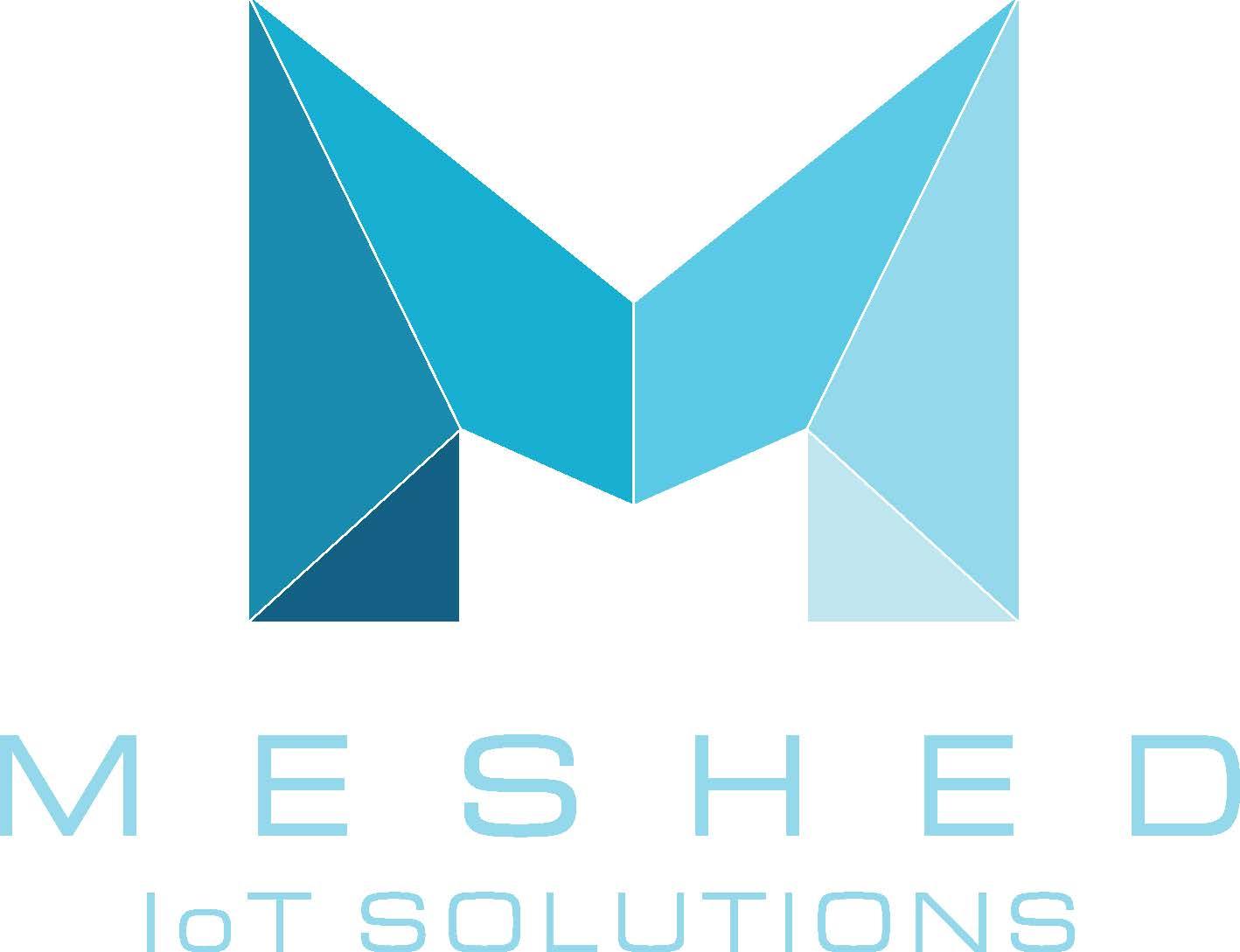
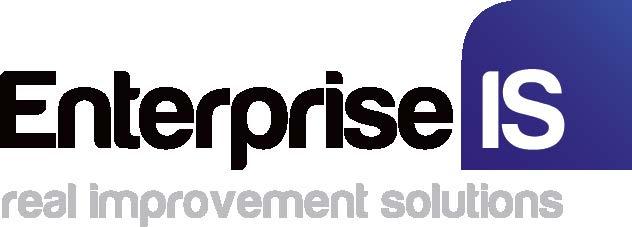
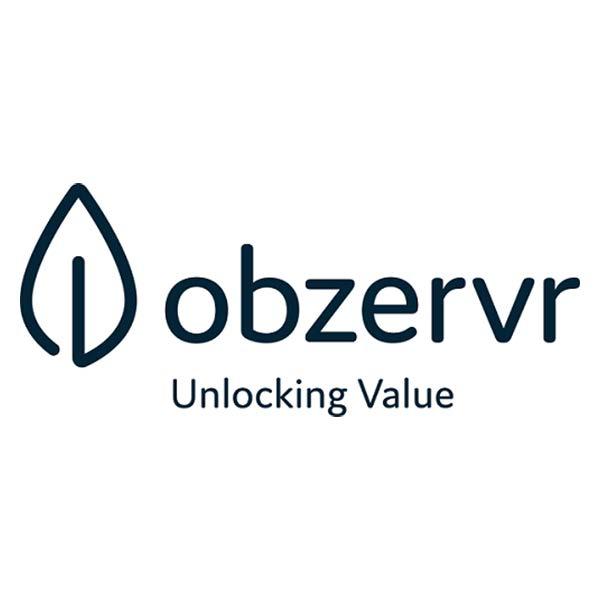




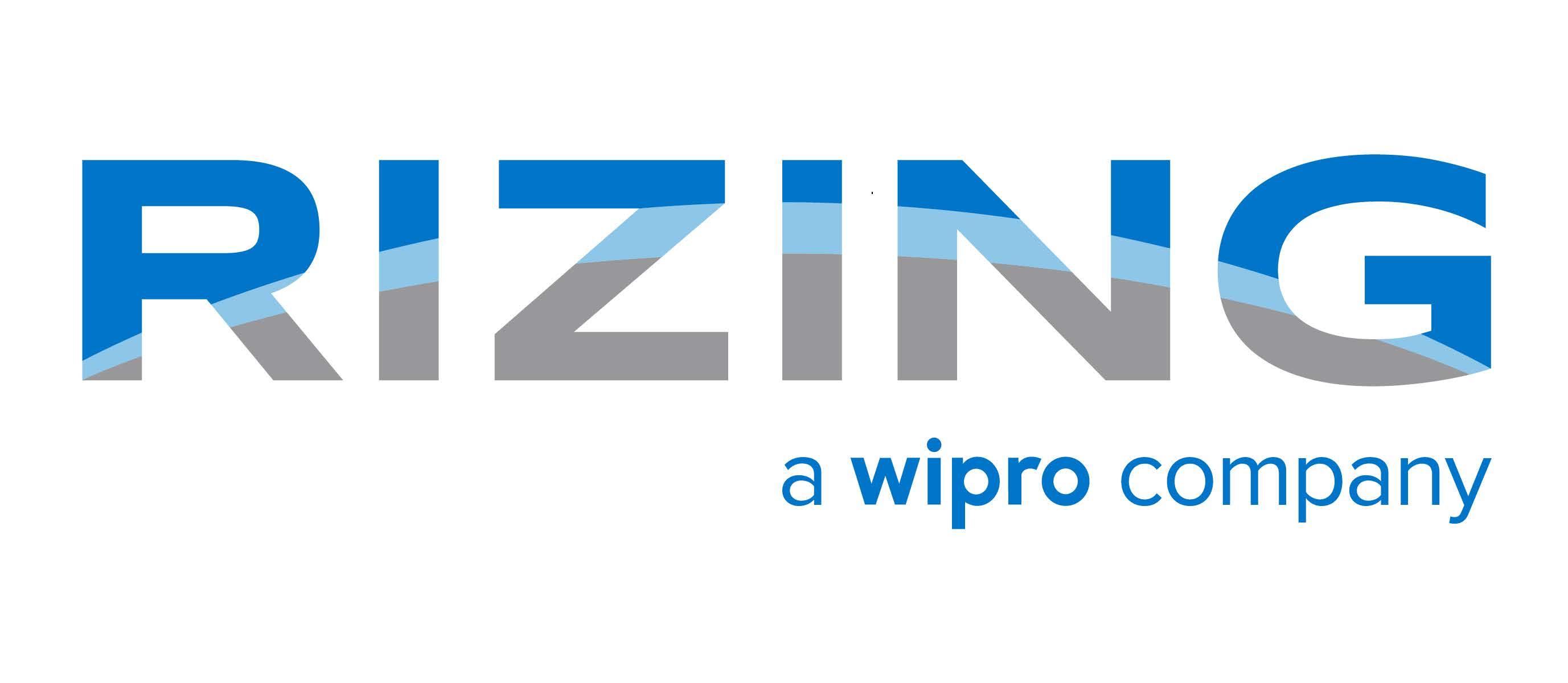



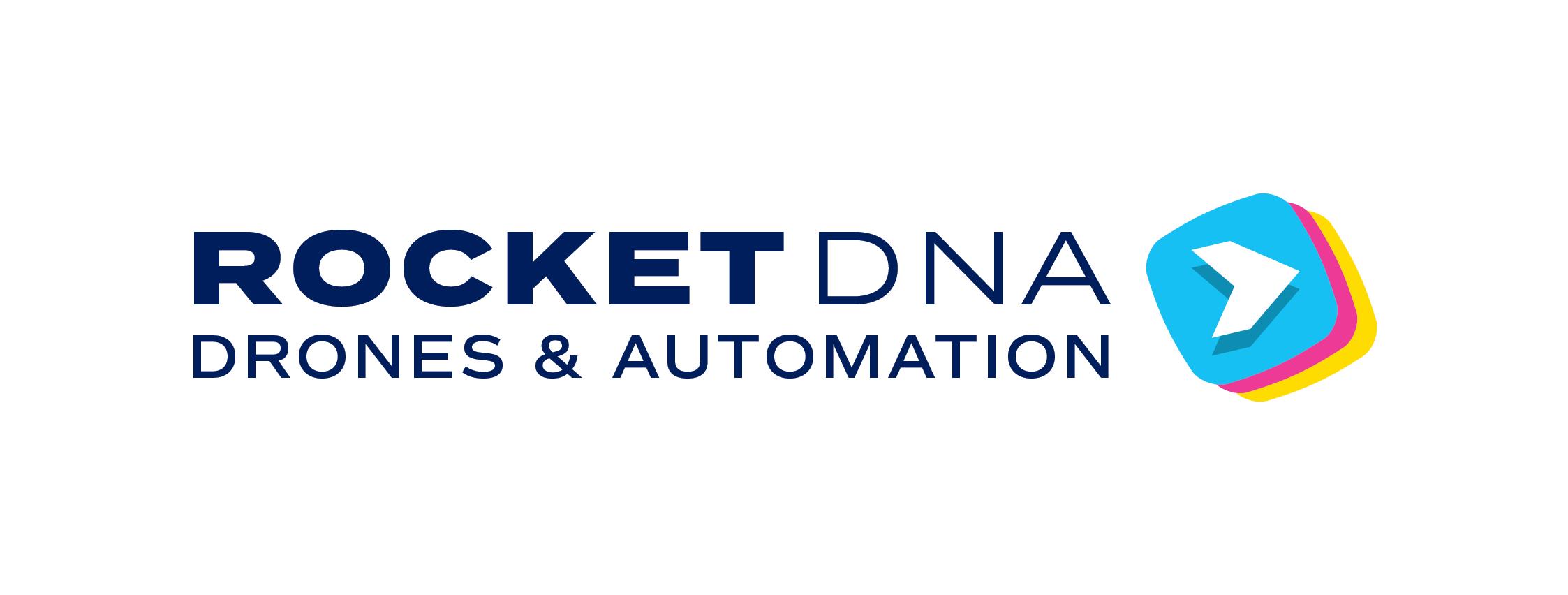





Get Your Tickets
Watch
MAINSTREAM Summit in 2 minutes
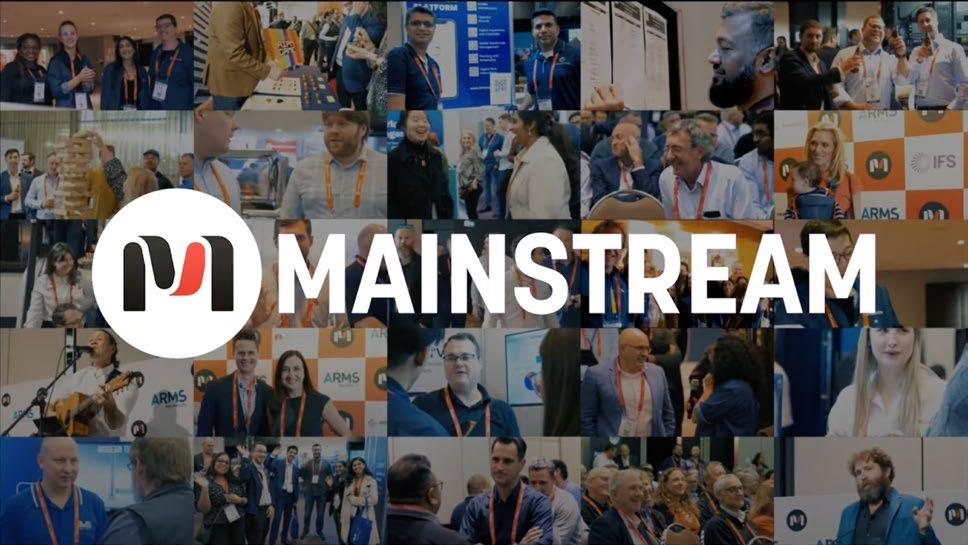
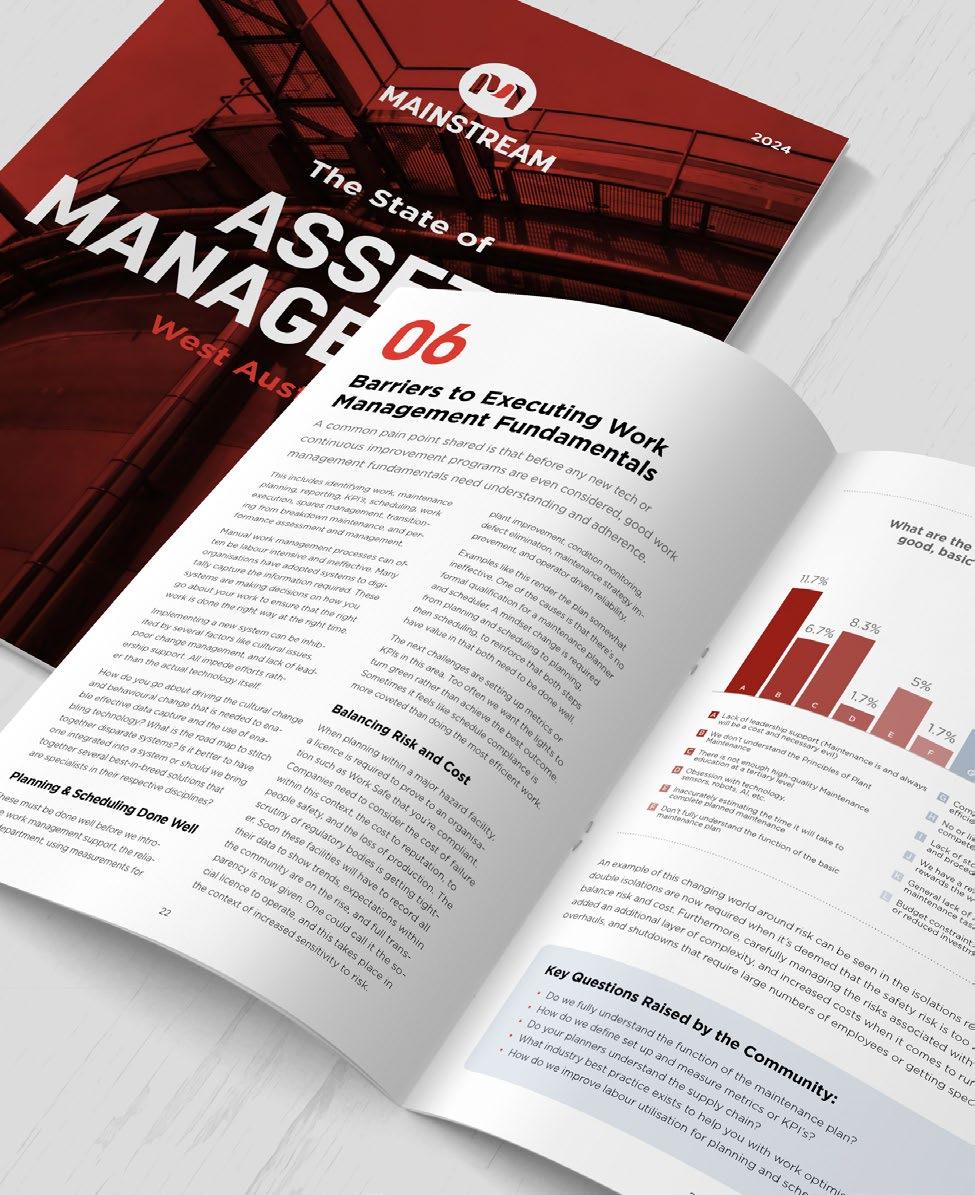
Advisory Team 2024

Stephanie Banks Maintenance Team Lead, Woodside Energy

Jamie McMahon Maintenance Superintendent, CBH Group

Allison Spicer Head of Engineering & Maintenance, Virgin Australia
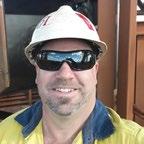
Gwyn Garland Senior Manager Asset Health –Fixed Plant, Newmont Australia

Lloyd Edmunds GM Engineering & Projects, Fortescue
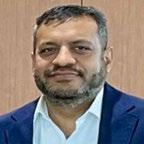
Amit Bareja Vice President Innovation & Strategic Projects, Schlam Payload

Jakob Verhoef Principal Engineer – Asset Management, WesCEF

Paul Sheppard Maintenance Manager, Talison Lithium

Briohny Evans Manager Mine Services, Fortescue
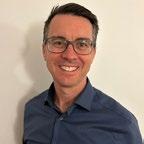
Jeff Tooley Group Maintenance & Reliability Manager, Beach Energy Limited

Karike Martin Maintenance and Reliability Engineering Manager, GMA Garnet Group
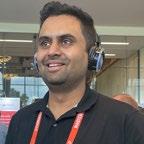
Raj Patel Reliability Engineer, Gold Fields
Matt Papaphotis

Practice Lead, Asset Management Technology and Analysis, Rio Tinto

Tim Aujard Head of Asset Performance, Australian Gas Infrastructure Group (AGIG)

Samreen Rahman National HME Assets Manager, Boral

Martyn Stafford Assets Manager, Southern Ports
Johan Snyman
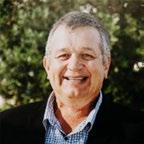
Asset Manager, ExSTO Global
Melissa Aspinall

Asset Performance Regional Manager, Water Corporation of WA

Anshul Bajpai Engineering & Asset Management Manager, Public Transport Authority of WA

Nathan Campbell Manager – Engineering and Maintenance, Tianqi Lithium Energy Australia
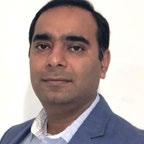
Paritosh Chaturvedi Group Manager – Asset Management, South32

Chelsea Fisher Manager Engineering and Projects, Fortescue
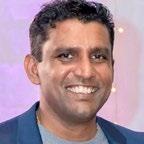
Roh Perera Planning Supervisor, MacMahon Holdings Limited

Lisa
MAINSTREAM Founder
+61 411 883 266
lisa.irving@theeventfulgroup.com


Ian
+44 7901 150 405
ian.collier@theeventfulgroup.com

Claire
+61 400 553 600
Ansumi
+27 837 002 282
ansumi.debruin@mainstreamcommunity.com

Guy Freebody
Director of Partnerships
+61 433 755 653
guy.freebody@theeventfulgroup.com

Val
+61 418 876 286
val.mcmullan@theeventfulgroup.com
